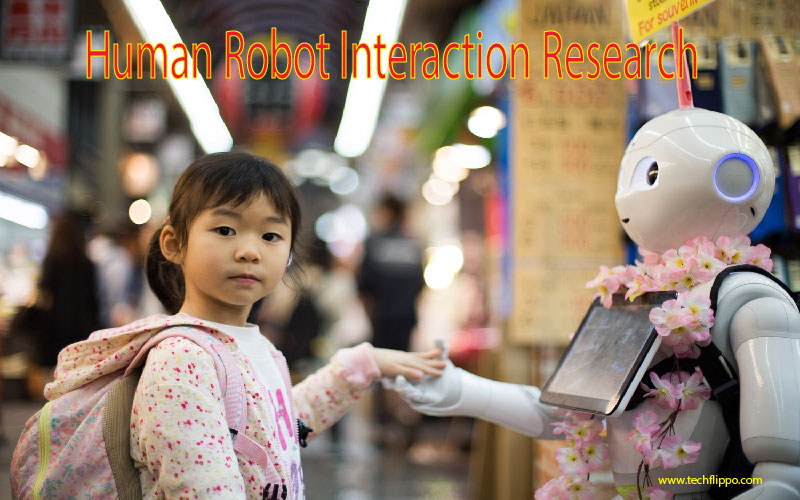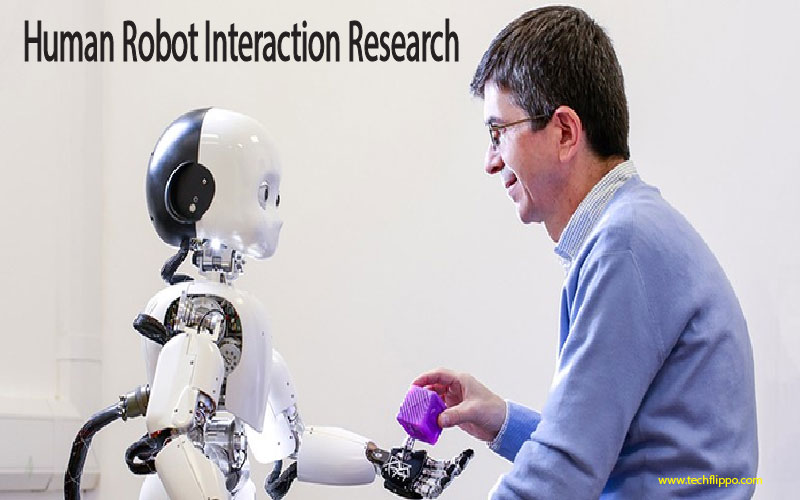How Human Robot Interaction Research is Shaping Tomorrow’s Technology
Imagine a world where robots not only assist us but also understand our emotions, respond to our needs, and seamlessly integrate into our daily lives. This is the promising future that Human Robot Interaction research is paving the way for. As technology advances at an unprecedented pace, the relationship between humans and robots is becoming increasingly intricate. The study of HRI delves deep into this dynamic interaction, exploring how we can create more intuitive and effective ways for machines to communicate with us.
From healthcare to manufacturing, HRI has far-reaching implications across various sectors. It’s not just about programming a robot to perform tasks; it’s about fostering meaningful interactions that enhance productivity and improve quality of life. Join us as we explore the fascinating journey of Human Robot Interaction research—its history, applications, societal impact, challenges faced along the way—and what lies ahead in this exciting field!

History and Evolution of HRI Research
The journey of Human Robot Interaction (HRI) research began in the mid-20th century. Early pioneers envisioned machines that could communicate and collaborate with humans seamlessly.
In the 1960s, initial experiments focused on basic command-response systems. Researchers sought to understand how robots could interpret human instructions, albeit in very controlled environments.
As technology progressed, so did HRI methodologies. The introduction of artificial intelligence revolutionized interactions. Robots became more adaptive and capable of learning from their surroundings.
By the late 1990s, interdisciplinary approaches emerged, blending psychology, cognitive science, and engineering. These collaborations opened new avenues for understanding human behaviors towards robots.
Today’s HRI research emphasizes emotional connections and social cues. It explores how these elements can enhance collaboration between humans and robots across various domains like healthcare and manufacturing.
Applications of HRI in Various Industries
Human Robot Interaction (HRI) is making waves across multiple industries. In healthcare, robots assist with surgery and help patients with rehabilitation. They provide companionship to the elderly, enhancing their quality of life.
In manufacturing, HRI boosts efficiency. Collaborative robots work alongside humans on assembly lines, performing repetitive tasks while allowing workers to focus on complex operations. This synergy increases productivity and safety.
Education also benefits significantly from HRI technologies. Robots serve as interactive learning tools for students, making lessons engaging and hands-on. They can adapt to individual learning paces, providing personalized education experiences.
The retail sector has embraced HRI too. Robots guide customers through stores or manage inventory in warehouses efficiently. Their presence enhances customer service while reducing operational costs.
With applications expanding rapidly across these sectors, the potential for innovation seems limitless as we continue exploring how human-robot collaboration can transform our lives.
Impact of HRI on Society and Everyday Life
Human Robot Interaction (HRI) is redefining our daily experiences. From smart assistants in homes to robots in hospitals, the presence of machines has become more prevalent.
In healthcare settings, robotic systems assist medical professionals by managing routine tasks. This allows doctors and nurses to focus on patient care rather than administrative duties. Patients often feel comforted by the friendly demeanor of social robots, which can help ease anxiety during treatment.
In education, HRI tools enhance learning experiences for students. Robots serve as interactive tutors that can adapt to individual learning styles and needs. Children engage better with technology that’s responsive and personable.
Moreover, HRI impacts industries like manufacturing and logistics by improving efficiency through automation. Workers collaborate with robots that handle repetitive tasks while they take on more strategic roles.
These advancements are not just technological; they reshape how we communicate and connect with each other in everyday life.

Challenges and Limitations of HRI
Human Robot Interaction (HRI) holds immense potential, yet it is not without its challenges. One major hurdle lies in the complexity of human emotions and social cues. Robots struggle to accurately interpret these nuances, which can lead to misunderstandings.
Another limitation is safety. Ensuring that robots operate securely alongside humans requires extensive testing and regulation. Any oversight could result in accidents, undermining public trust in robotic systems.
Moreover, there are ethical concerns surrounding HRI. Questions about privacy and autonomy arise as robots become more integrated into daily life. Balancing innovation with responsible use remains a critical issue.
Technical limitations also persist, particularly regarding communication between humans and machines. Language barriers or misinterpretations can hinder effective collaboration on tasks.
Accessibility presents a challenge; not everyone may benefit equally from advancements in HRI technology due to socioeconomic differences or varying levels of technological literacy.
Latest Developments in HRI Research
Recent advancements in Human Robot Interaction (HRI) research are paving the way for more intuitive and responsive robots. Innovations like machine learning algorithms enable robots to learn from their environments, improving their interactions with humans.
Another exciting development is the use of natural language processing. This technology allows robots to understand and respond to human speech more accurately than ever before. As a result, communication becomes seamless, fostering better relationships between humans and machines.
Researchers are also exploring emotional intelligence in robots. By equipping them with the ability to recognize human emotions through facial expressions or tone of voice, these machines can offer empathetic responses tailored to individual needs.
Moreover, researchers have begun integrating robotics into virtual reality settings. This combination enhances training programs across various sectors by creating realistic scenarios where users interact with lifelike robot avatars.
Future Possibilities and Predictions for HRI Technology
The future of Human Robot Interaction (HRI) technology is brimming with potential. Imagine robots that can intuitively understand human emotions and respond accordingly. This capability could transform fields like healthcare, where empathetic robotic companions assist the elderly.
Another exciting prospect lies in the integration of AI with HRI. As artificial intelligence evolves, it will enable robots to learn from their interactions and adapt to individual preferences. Personalization will become a hallmark of user experience.
Moreover, advancements in haptic feedback technology may allow for more immersive interactions between humans and robots. Users might feel physical sensations when interacting with virtual entities or even receive real-time tactile responses from robotic systems.
Further down the line, we could see collaborative environments where humans and robots work side by side seamlessly, enhancing productivity while fostering creativity across various sectors such as manufacturing and design.
Conclusion:
The landscape of Human Robot Interaction (HRI) is evolving rapidly, presenting a realm of possibilities that were once confined to the pages of science fiction. As research progresses, it promises not only to enhance our technological capabilities but also to transform how we engage with machines. With advancements in artificial intelligence and robotics, the synergy between humans and robots will become increasingly seamless.
Imagine a world where robots can intuitively understand human emotions or assist in complex tasks with minimal direction. The potential applications span across healthcare, education, manufacturing, and even personal companionship. This interplay could redefine work environments and family dynamics alike.
As researchers continue to address challenges such as ethical considerations and user acceptance, the foundation for more sophisticated interactions is being laid. Each breakthrough brings us closer to realizing an era where collaboration between humans and robots enriches our lives.
The journey into this exciting future involves continuous exploration and adaptation within HRI research. By fostering innovation while prioritizing safety and accessibility, society stands on the brink of unprecedented growth driven by technology designed for harmonious coexistence. The path ahead looks promising as we embrace these new partnerships with open minds—ready to shape tomorrow’s reality together.